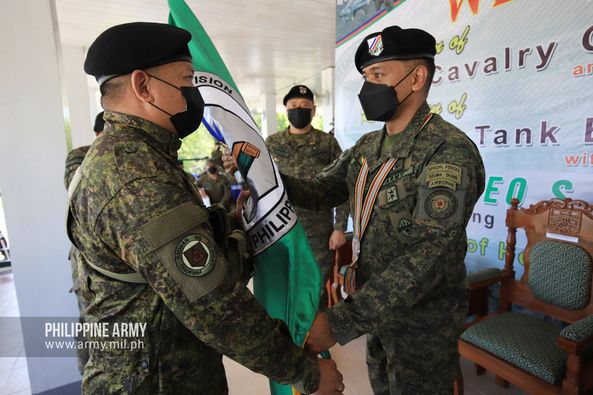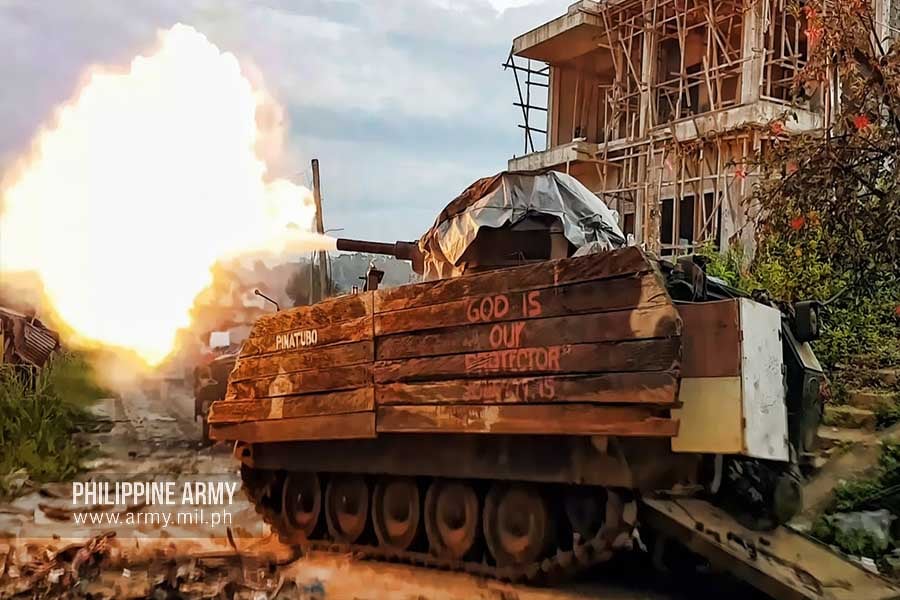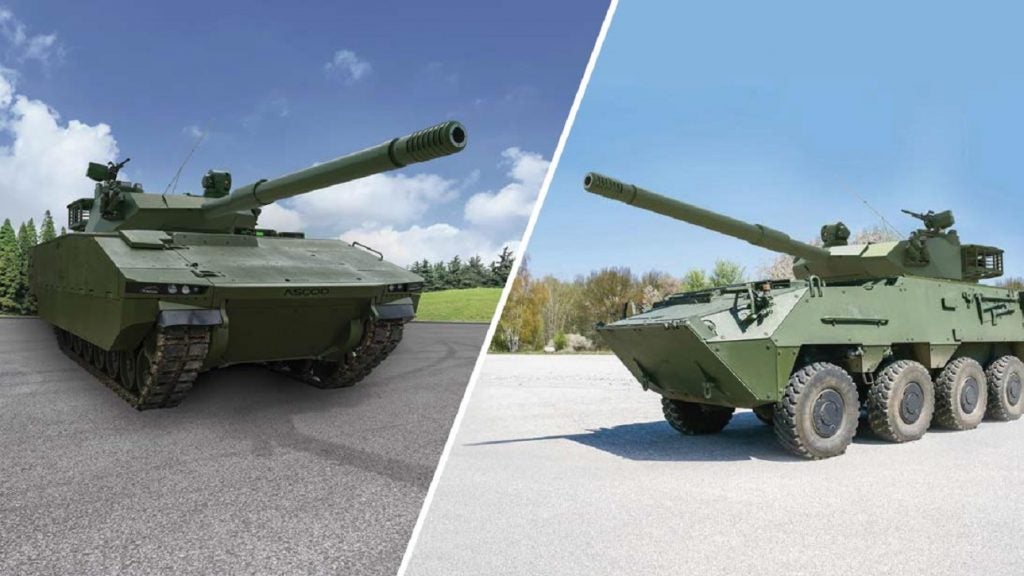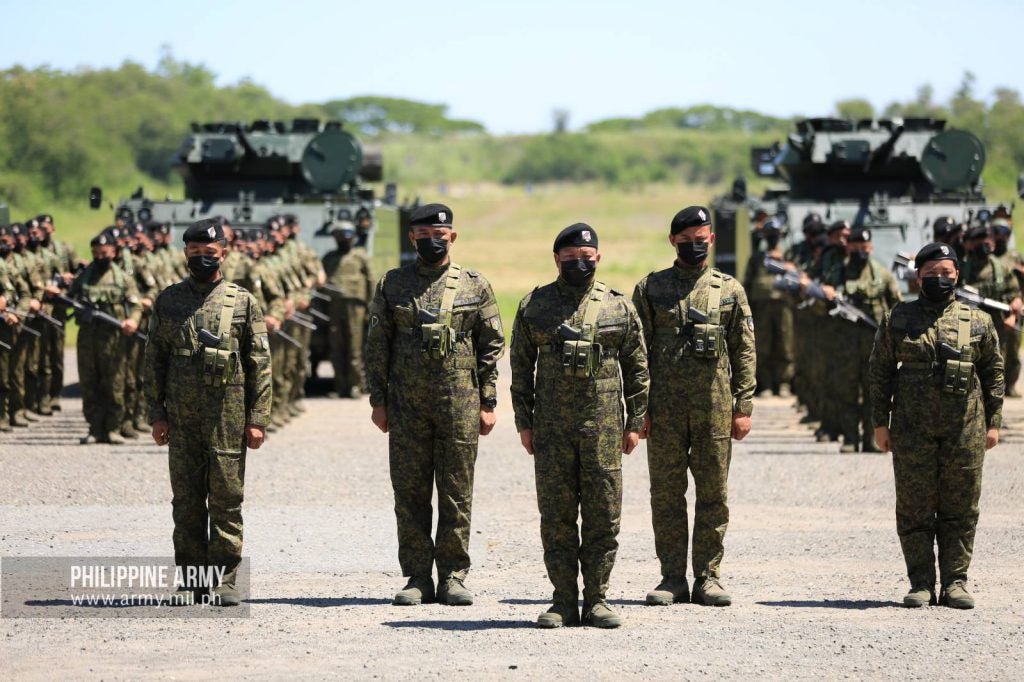Philippine Army Reactivates its Tank Battalion
In a historic move, after almost 80 years the Armor Division of the Philippine Army is reactivating its Tank Battalion. A ceremony was held on April 21, 2022, where soldiers from the deactivated 8th Cavalry Company, formerly attached to the 103rd Infantry Regiment of the 1st Infantry Division, were assembled and presented with their new unit colors. Chief of the Army Lt. General Romeo Brawner Jr. was present at the ceremony and remarked that the reactivation of the tank battalion was a step forward in operational capabilities, stating that the unit’s purpose is “to provide our infantry and mechanized infantry forces with advanced firepower capability and enhance the standards of protection.”

This decision was spurred by the recent purchase of new armor assets from the Israeli company Elbit that are set to arrive later this year. This was confirmed by Philippine Army spokesperson Col. Xerxes Trinidad, the procurement includes 10 modified Pandur IIs equipped with an Elbit-designed turret housing a 105mm smoothbore gun (designated the Sabrah Tank Destroyer), 18 modified ASCOD IIs in the Medium Main Battle Tank configuration with up-rated armor and the same Elbit turret that will be installed on the Pandurs/Sabrah Light Tanks, as well as a command vehicle and recovery variant of the ASCOD II. Crews have already begun training for these vehicles using a tank gunnery simulator that was sold to the Philippines via a joint venture between Wolfberry Asia and PT Indocertes in January of 2022.
A Brief History of Philippine Armor
The history of Philippine armored vehicles has been largely tied to the status of the nation’s military, waxing and waning with the organization’s overall level of readiness. In the aftermath of World War Two the newly independent Armed Forces of the Philippines (AFP) was able to field a small number of surplus American tanks including M4 Shermans and M24 Chaffees, the latter of which saw combat with the Philippine Expeditionary Forces to Korea during the Korean War. During the Battle of Yultong, the Philippine 10th Battalion Combat Team (BCT) held against repeated assaults from a division-sized element of the Communist Chinese People’s Volunteer Army and 10th BCT’s attached tank company of M24s proved vital in preventing a rout. Captain Conrado Yap, commanding officer of the tank unit, was killed in the fighting while saving a stranded infantry platoon and was posthumously awarded the Medal of Valor, the Philippine’s highest military decoration.
Moving forward to the 2010s, the Philippine Army found it was having to use its vehicles in a role beyond that of its normal mission, infantry and fire support in urban combat. It was during the ferocious fighting of the sieges of Zamboanga in 2013 and Marawi City in 2017 that the Philippine Military recognized it desperately needed more modern solutions on the battlefield. Particularly, fire support vehicles that could not only survive a hit from short range anti-armor weapons, but also mount weaponry powerful enough to punch through hard cover and provide adequate suppression. Images of older Simbas, LAV-300’s and Cadillac Gage V-150’s with wood and occasionally cardboard makeshift applique armor, similar to the prior 2000 campaign against the MILF, became staples of the fierce fighting. While an enduring symbol of the improvisation of Filipino service members, it became clear a better solution was needed.

In the years following, during the Cold War era, the Philippines boasted a modest but relatively modern fleet of armor including a small force of M41 light tanks, M113 armored personnel carriers, and wheeled Simba troop carriers. Up to the end of the 1990’s the AFP continued to acquire armored vehicles that had been phased out by other countries, including Cadillac Gage Commandos, AIFVs based on the M113, and LAV-300 wheeled fire support vehicles. However, in the aftermath of the United States pulling out its military bases in 1992 the AFP saw a decline in capability, readiness, and the ability to maintain its equipment. Still, the AFP had to work with what it had when in 2000 the government initiated combat operations against the Moro Islamic Liberation Front (MILF) after it broke a negotiated ceasefire and began to occupy towns and civic buildings in Mindanao. During the campaign, which ended in the destruction of the MILF’s main bases, the Army adapted to rebel B-40 (a Chinese clone of the RPG-2) ambushes by installing wooden slats as makeshift applique armor to their vehicles, a measure that proved to be successful as warheads detonated before penetrating the armor.
A New Armored Force
In 2013, the Philippine Government put forth a tender for light tanks as part of the Light Tank Acquisition Project of the Revised AFP Modernization Act on a government-to-government basis, and the top three entries came from Indonesia with the FNSS Harimau, South Korea and its K-21-105, and Israel’s Elbit. Ultimately the tender was awarded to the latter, which marketed modified 105mm smoothbore cannon 8×8 wheeled Pandur IIs and tracked ASCOD IIs. Neither would fall into the classification of a modern main battle tank. However, for the doctrine of the Philippine Military they suit their intended mission set well. The Philippines is not good tank country, it is a vast archipelago and the islands themselves are covered in jungle and hilly to mountainous terrain. Hence the trend towards lighter vehicles which can be transported via air and navigate treacherous terrain.

Despite a lack of concrete information regarding doctrine change involving the new Elbit-supplied vehicles, based upon their characteristics some methods can be inferred. The Sabrah Light Tank, based on the ASCOD, is an up-armored and up-gunned IFV that would operate well in a fire support role to other PA mechanized formations and would be preferable to use for urban warfare due to its stronger armor. The Sabrah Tank Destroyer, based on the Pandur, is wheeled and has a better ability to keep up not only with the older V-150s, Simbas, and LAV-300s in the AFP’s arsenal but also the new Iveco Guarani wheeled infantry fighting vehicles that are on order.
Even though the number of light tanks soon joining the AFP is small, it marks the beginning of a new, modern fleet of armored vehicles for the Philippine Army. Leading the way will be the service members of the reborn 1st Tank Battalion of the Armor Division.
Header image: The 1st Tank Battalion of the Armor Division of the Philippine Army stands at attention during their activation ceremony. (Philippine Army Photo)

